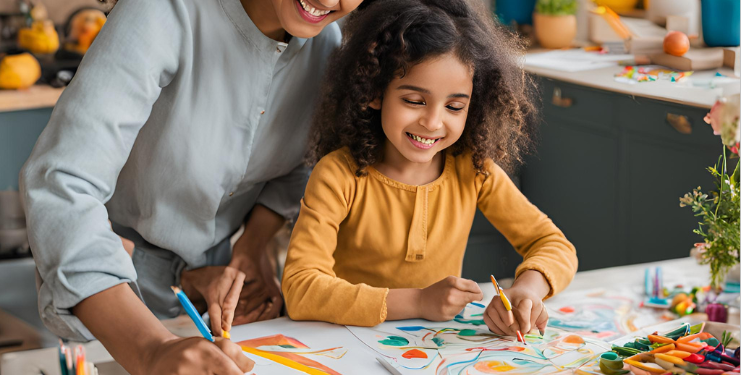Nurturing Creativity at Home
It’s that time of the year again, it’s back to school. Even though the arts are a vital part of a well-rounded education, fostering creativity, critical thinking, and emotional expression (or at least that was the thinking 50-60 years ago), not all schools offer robust arts programs these days, leaving many parents concerned about their children missing out on these valuable experiences. If your child’s school doesn’t have an arts program, don’t worry—there are plenty of ways to nurture creativity and artistic skills at home. In this blog post (geared toward younger kids), we’ll explore how you can provide a rich art education for your young child, even if their school lacks formal art instruction, and we’ll recommend some products to help you get started.
Why Art Education Matters
Art education plays a crucial role in a child’s development, offering benefits that go far beyond the ability to draw or paint. It enhances cognitive abilities, improves fine motor skills, and provides an outlet for emotional expression. Art also encourages creativity and imagination, skills that are essential in every area of life, from problem-solving in academics to innovation in future careers. Without access to art education at school, it’s important to find alternative ways to integrate art into your child’s life.
How to Provide Art Education at Home
1. Create an Art Space at Home:
- Designate a Space: Set up a dedicated area in your home where your child can freely create art. This doesn’t need to be a large space—a corner of a room or a small table with art supplies will do.
- Organize Supplies: Stock the space with a variety of art materials such as paper, colored pencils, markers, paints, and brushes. Keep these supplies organized and easily accessible. Delta Children Kids Table and Chair Set
2. Incorporate Art into Daily Activities:
- Drawing Time: Encourage your child to draw every day, even if it’s just for a few minutes. This can be a relaxing after-school activity or part of their bedtime routine. Crayola Inspiration Art Case
- Art Challenges: Set fun art challenges or themes each week to inspire creativity. For example, challenge your child to draw their favorite animal, create a comic strip, or design a new planet.
- Art with a Purpose: Use art to explore other subjects. Have your child draw scenes from a book they’re reading, illustrate a science concept, or create a map of a historical event.
3. Invest in Art Education Resources:
- Art Books and Guides: Purchase art books and guides that teach drawing, painting, and other artistic techniques. These resources can provide structured learning and inspire your child to try new styles and mediums. How to Draw 101 Animals
- Online Art Classes: Enroll your child in online art classes or workshops. Many platforms offer courses for kids that cover everything from basic drawing skills to advanced techniques. Outschool is a popular platform that offers a variety of creative classes for children.
- Art Apps and Software: Introduce your child to digital art with apps and software designed for kids. These tools can help them explore new creative avenues and develop skills in digital illustration. Procreate is a highly recommended app for digital drawing.
4. Encourage Creative Exploration:
- Experiment with Different Mediums: Allow your child to experiment with different art mediums, such as watercolors, clay, or collage. This exploration helps them discover what they enjoy most and broadens their artistic skills. Crayola Air Dry Clay
- Visit Museums and Galleries: Take your child to local art museums, galleries, or even virtual museum tours. Exposure to different styles and artists can spark inspiration and a deeper appreciation for art. Google Arts & Culture offers virtual tours of museums around the world.
5. Support and Celebrate Their Art:
- Display Their Work: Create a gallery wall at home to display your child’s artwork. This not only boosts their confidence but also shows them that their creativity is valued. Umbra Hangit Photo Display
- Art Celebrations: Host small art shows or exhibitions for family and friends to showcase your child’s work. This can be a fun way to celebrate their creativity and encourage them to continue developing their skills.
If your child’s school doesn’t have an arts program, you have the opportunity to create a rich and personalized art education experience at home. By providing the right resources, encouraging daily creative activities, and celebrating their artistic efforts, you can help your child develop valuable skills and a lifelong love for the arts.
Art education is essential, and with a little creativity and effort, you can ensure your child has access to the enriching experiences they need to thrive.

